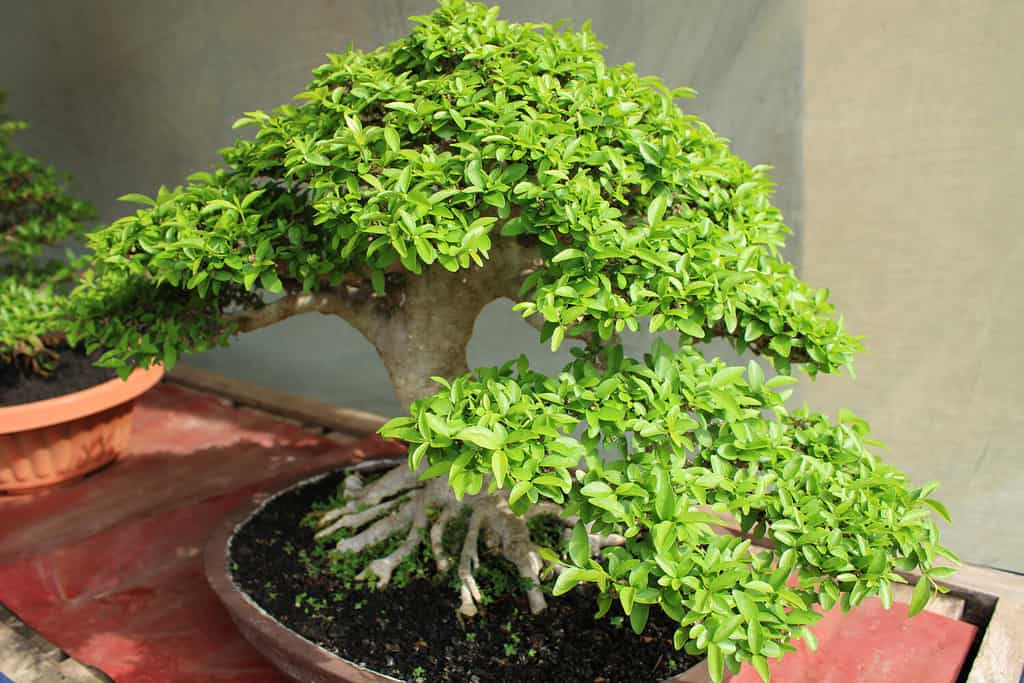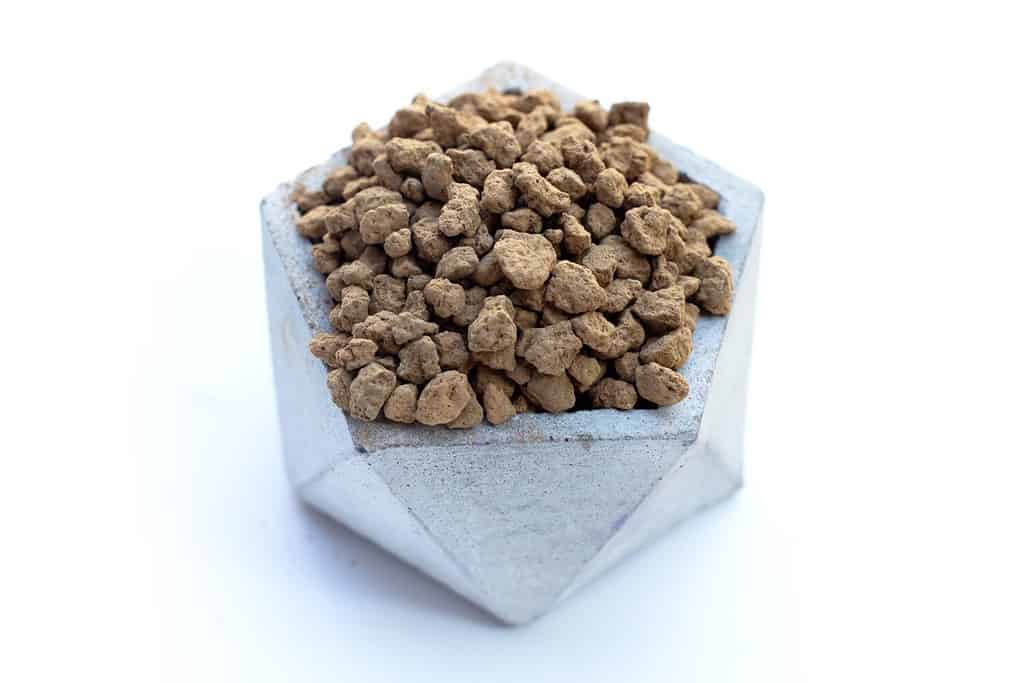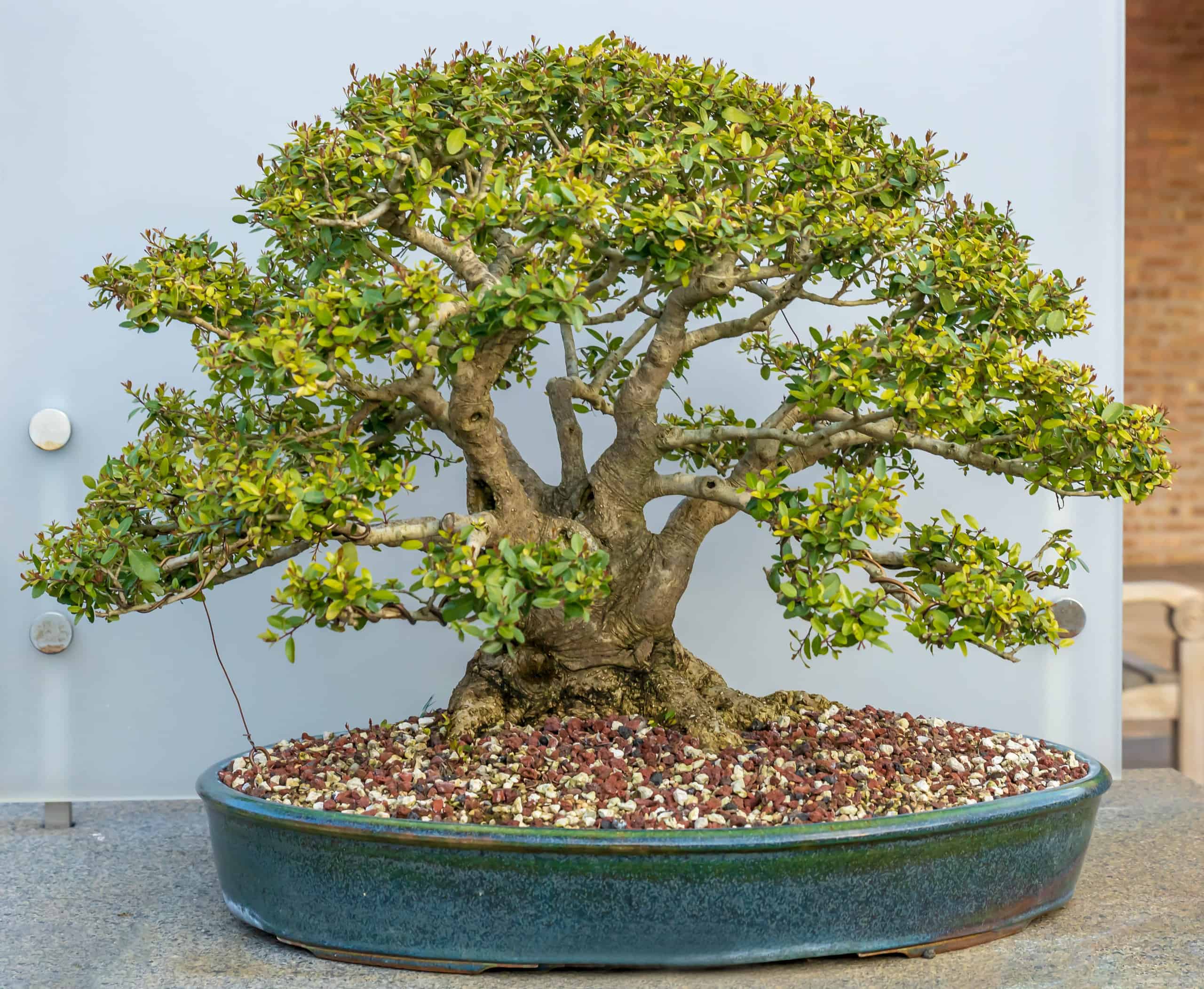If you’re considering working with a new species of tree in your craft, a holly bonsai is worth considering. Their ease of care, naturally compact size, and dense, attractive foliage make these trees ideal specimens for use in bonsai. They are responsive to shaping and forgiving of heavy pruning, and although there are a few caveats when working with them, hollies are simple to care for.
In this guide, we’ll talk about the care your holly bonsai will need to thrive. We’ll also talk about how to shape your bonsai pruning and wiring and considerations to make when working with your tree. Whether you’re a bonsai veteran or just getting started in the craft, this guide will contain information that is useful to you in cultivating your holly bonsai.
| Botanical Name | Ilex crenata (Japanese holly) |
| Common Cultivars | Ilex crenata ‘Convexa’; Ilex crenata ‘Helleri’; Ilex crenata ‘Stokes’ |
| Water | As the soil begins to dry out. Less water is needed in winter. |
| Sunlight | Full sun, sheltered during mid-afternoon. Tolerates some shade. |
| Soil Type | Well-draining bonsai mix or grit-heavy potting mix. |
| Indoors or Outdoors? | Both, but does best outdoors. |
| Beginner Friendly? | Yes. Forgiving, strong grower with easy care requirements. |
Popular Species for Holly Bonsai
The most popularly cultivated species of holly in the bonsai world is probably the Japanese holly or Ilex crenata. It is a naturally compact species of tree, reaching heights of only 5 or 10 feet in its natural environment. Some cultivars, like Ilex crenata ‘Helleri’, are even more compact, averaging only 3 or 4 feet in height. The species is dioecious, meaning that individuals of the species are sexually distinct and unable to self-fertilize. If the summer flowers of a female holly become fertilized, they will give way to small fruits that ripen to black in the fall.
This species is very well-suited for use in bonsai. Not only is it naturally compact to begin with, but it is also very tolerant of pruning and produces very fine twigs and branches. Cutting back undesired leaves and shoots encourages the plant to produce an even denser arrangement of new growth. Other species that perform similarly, such as the North American native Yaupon holly (Ilex vomitoria), and the English holly (Ilex aquifolium) are also sometimes used in bonsai. The latter, although beautiful, produce spiny foliage and is not used as often for this reason.

The Japanese holly is naturally compact and produces small, densely grouped foliage, making it an ideal candidate for use in bonsai.
©hidayat R/Shutterstock.com
How to Care for Your Holly Bonsai
The Japanese holly is a great choice for beginner bonsai practitioners. It is a very forgiving plant when it comes to pruning and shaping and its care requirements are simple. Below, we’ll talk about what it takes to keep a Japanese holly growing happily in miniature.
Sunlight and Placement
Though it can tolerate partial shade, the Japanese holly does best in full sun. When choosing where to place your holly bonsai, consider locations that receive mostly morning and evening sunlight. You’ll want to make sure your plant is at least partially shaded during the mid-afternoon hours when the sun is at its peak. You may need to experiment with various locations outdoors to find where your tree is happiest.
If you have previously kept your holly bonsai inside but are planning to move it outdoors, be sure to introduce it slowly to its new location. Moving a sheltered indoor plant into direct sunlight and wind can stress it out. To ease your plant’s transition, increase its exposure to the outdoors gradually throughout a couple of weeks.
In the landscape, the Japanese holly is hardy down to zone 5a. However, your potted holly is likely to struggle with cold temperatures. Although this species can tolerate frost and freezing temperatures when rooted in the ground, the small soil volume of your plant’s pot will not be enough to insulate its roots. Therefore, you’ll need to bring your bonsai indoors to protect it from freezing. You should place it in a cool, brightly lit space, like a garage window or closed-in patio, to ensure that it can enter dormancy. A cold frame or greenhouse are good options as well.
Water
As with any plant, you need to find the right balance when watering. While you shouldn’t allow your plant’s soil to dry out completely, you also need to avoid overwatering.
How much and how often you water will depend on your climate and the placement of your bonsai. During the warm summer months, you will need to water much more frequently. In particularly hot areas, you may need to water your bonsai as frequently as once per day. As temperatures begin to drop in the fall and the sun becomes less intense, you will need to water less often.
Check your bonsai’s soil with your finger to see whether it has begun to dry out below the surface. If it has, you should give your plant some water. If the soil is still moist, however, give it more time. Watering too frequently can cause soil to become soggy, creating conditions that encourage root rot.
Soil Type
Any well-draining bonsai mix will work well for your holly bonsai. Typically, these will consist of pelleted clay, pumice, and organic material. The pelleted clay and pumice, or other stone, will make up a large part of the mix. These create a substrate that both drains well and retains moisture long enough for your plants to take it in. They also create large spaces in the substrate to ensure that your tree’s roots remain well-oxygenated. The organic component is usually well-composted plant matter, but may also be coconut coir or another absorbent plant material. These help with both water and moisture retention, but break down over time and will need to be replaced.

Akadama is a special type of pelleted clay that is a common component of many bonsai mixes. It performs well when it comes to both drainage and moisture retention. Over time, however, it loses its shape and muddies the soil mix.
©Bowonpat Sakaew/Shutterstock.com
Fertilization
Holly bonsai trees require no special fertilizers. You can apply a balanced, liquid fertilizer once every week or two throughout the growing season. Whatever fertilizer you choose, be sure to dilute it to half-strength. Watch out for signs of nutrient deficiency like yellowing leaves, browning leaf tips, or lost foliage. While these may also indicate other issues, like over- or underwatering, it is worth assessing your fertilizing routine if you notice these symptoms. You may need to change the frequency with which you fertilize your bonsai.
Repotting
You’ll likely need to repot your holly bonsai every year or two to replenish the soil and make sure that your tree has plenty of room in its pot. To find out whether it’s time to repot, use your root rake to carefully tilt your bonsai and its soil out of the pot. If the soil is still loose and well-draining and your tree’s roots still have room to spread out, then you can hold off.
If your holly’s roots are pressed against the side of the container, wrapping around the bottom, or protruding from drainage holes, it’s time to clean house. To do this, lift the plant from the pot and gently rake out all of the soil from between the roots. Using sharp, disinfected shears, trim away about one-third of the tree’s roots. Once you have cleaned and trimmed the roots, you can place your bonsai back into its pot (or into a new one) on a mound of fresh, well-draining bonsai mix. Fully cover the roots with bonsai mix and water thoroughly to moisten the new substrate.

When repotting, carefully remove old bonsai substrate using a root rake or root hook. Trim roots where necessary before placing your plant back into its pot.
©qSPOoKYp/Shutterstock.com
How to Shape Your Holly Bonsai
Providing your tree with everything it needs to thrive isn’t all you’ll need to do to create your holly bonsai. The art of bonsai depends on the harmonizing of plant care with careful shaping and styling of the tree. To achieve the style you’re after when working with your holly bonsai, you’ll need to know a few things about pruning and wiring.
Pruning
The Japanese holly bonsai is very tolerant of pruning. In the spring or early summer, you can trim back new growth to maintain your tree’s overall shape and choose where new branches will form. Be sure you don’t remove all of your tree’s new growth, however.
To keep your tree’s foliage looking full and healthy, prune and defoliate more heavily along the margins of the canopy. This allows plenty of light to reach the interior of the canopy and encourages healthy foliage to form down the branch. If the interior of the canopy becomes too shaded, your tree will begin dropping leaves, leading to a sparser appearance. Careful defoliation can also help in decreasing the size of future foliage and shorten new internodes over time, causing your tree to produce an even denser canopy.

Careful defoliation of your bonsai can help shorten the space between leaves over time, creating denser canopies and pads of foliage.
©Marinodenisenko/Shutterstock.com
Wiring
If you must wire your Japanese holly to direct its growth, do so with care. The twigs and branches tend to be brittle and may snap if bent too far, especially as they age. Younger growth, although thinner, tends to be significantly more pliable. Oftentimes, older branches can’t be bent much more than a couple of degrees without breaking. The bark is also soft and prone to scarring if wrapped too tightly. You can use raffia when applying your wire to give the branches better support and prevent the wire from rubbing or pressing into the bark.
In the spring and summer, carefully wire young growth as needed. You’ll need to leave the wire on the branch for at least a couple of months before it will retain its shape. When the branch holds its position, carefully cut the wire off at each wrap of the branch. If the bark appears to be growing into the wire, remove the wire immediately to prevent further damage to the branch. The wire that becomes too tight can cut off your tree’s circulation and cause branches to die.

When wiring your holly bonsai, choose a gauge of wire that is suitable to the thickness of the branch that you are guiding into shape. Be careful not to leave the wire on for too long, as it can begin to restrict the growth of the branch.
©Nattapol_Sritongcom/Shutterstock.com
Thank you for reading! Have some feedback for us? Contact the AZ Animals editorial team.








